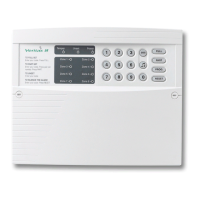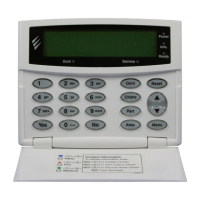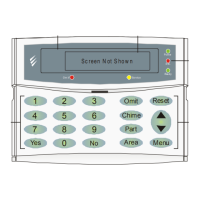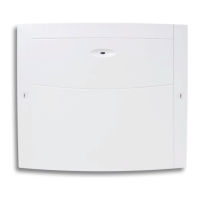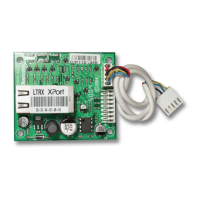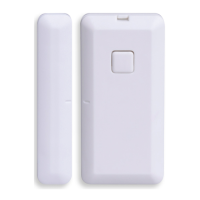Veritas R8 Plus & Excel Installation Manual Installation
INS045-14 13
End Of Line Technology
Those already familiar with End of Line (EOL) Technology
(sometimes referred to as Balanced Zones) may wish to skip this
section.
End of Line Resistance is a technique which, by adding resistance
at the last detector in the loop, provides each loop with its own 24
hour tamper protection.
The panel can use two different types of EOL resistors, traditional
Texecom 4K7/2K2, or Veritas values 10K/22K/33K. See page 28
for programming details.
10K/22K/33K
The panel can distinguish up to four possible states; low
resistance (10k) is interpreted as zone clear, high resistance
(33k) is interpreted as zone in fault. Short circuit may optionally
be interpreted as tampering or zone clear. Open circuit may
optionally be interpreted as tampering or zone in fault.
Resistors are coded with coloured bands to identify the different
values, as follows:
Resistor Colour Code
10k
Brown, Black, Orange, Brown
22k
Red, Red, Orange, Brown
33k
Orange, Orange, Orange, Brown
Thus there are four possible configurations depending on the
options selected. These include normally closed operation (a
Global System Tamper zone is provided) and become
progressively more secure, as follows:
The control panel is supplied with links fitted across the eight zones
(Z1 - Z8), the Global System Tamper (TAMP) and Bell Tamper (SAB
C, D) to simulate closed circuits.
These links are removed during installation as each zone is
connected.
The Global System Tamper zone will typically only be used with
normally closed operation.
If a zone is not required then the link should be left in place.
If EOL operation is selected and a zone is not required then the zone
link should be replaced with a 10K resistor (supplied).
When wiring a 24 Hour zone (Fire, PA and Tamper), such as a panic
button, it may be more convenient to fit the EOL resistor(s) in the
panel than in the detector.
Figure 3 - EOL Wiring
Miscellaneous Option 3.2 (S/C = Tamper) Off
Miscellaneous Option 3.3 (O/C = Tamper) Off
ALARM LID
ZONE
TAMPER
Figure 3a - Normally Closed Operation.
Miscellaneous Option 3.2 (S/C = Tamper) On
Miscellaneous Option 3.3 (O/C = Tamper) Off
10K
ALARM
LID
ZONE
Figure 3b - "American" Operation.
Miscellaneous Option 3.2 (S/C = Tamper) Off
Miscellaneous Option 3.3 (O/C = Tamper) On
33K
ALARM
LID
ZONE
Figure 3c - "European" Operation (one detector
per zone).
Miscellaneous Option 3.2 (S/C = Tamper) On
Miscellaneous Option 3.3 (O/C = Tamper) On
22K
10K
ALARM
LID
ZONE
Figure 3d - High Security Operation (one detector
per zone).
4K7/2k2
2 Normally
Closed Devices
1 Normally
Closed Device
Ta m p e r
E.O.L
Ala rm
Zone 1
4k7
2k2
Ta m p e r
E.O.L
Alar m
Zone 1
4k7
Ta m p e r
E.O.L
Alar m
4k7
2k2

